Katherine Marshall takes a look at the work of Arthur Harry Church FRS on phyllotaxis, or ‘architectural studies of vegetable life’.
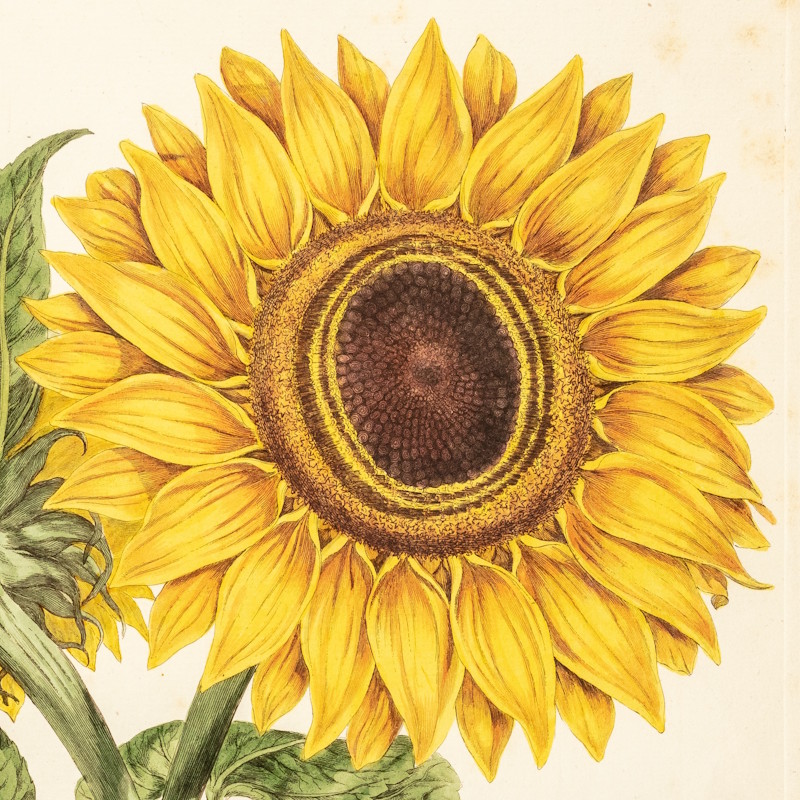
I recently spent one of the last days of summer sunshine at a pick-your-own farm, where I got the opportunity to cut some sunflower stems. The saucer-sized flower heads supported on gigantic stalks are the stuff of childhood wonder, but for me the real beauty lies in the seeds.
 Helianthus by Johann Sebastian Müller, 1777 (RS.21549)
Helianthus by Johann Sebastian Müller, 1777 (RS.21549)
In 2015 the Royal Society received a sculpture bust of Lucie Green by the contemporary British artist Marcus Cornish. Sculpted in earthy terracotta, the burnished and richly textured surface of the clay contrasts with the smooth golden sunflower seeds resting in Green’s cupped hands. The symbolic use of sunflower seeds, here representing Green’s work as a solar scientist, also brings to mind the installation by Ai Weiwei, who a few years before had filled the turbine hall of the Tate Modern in London with over 100 million handcrafted porcelain seeds. It’s the formation of the seeds within the flower head, with overlapping spiral patterns, which I find fascinating.
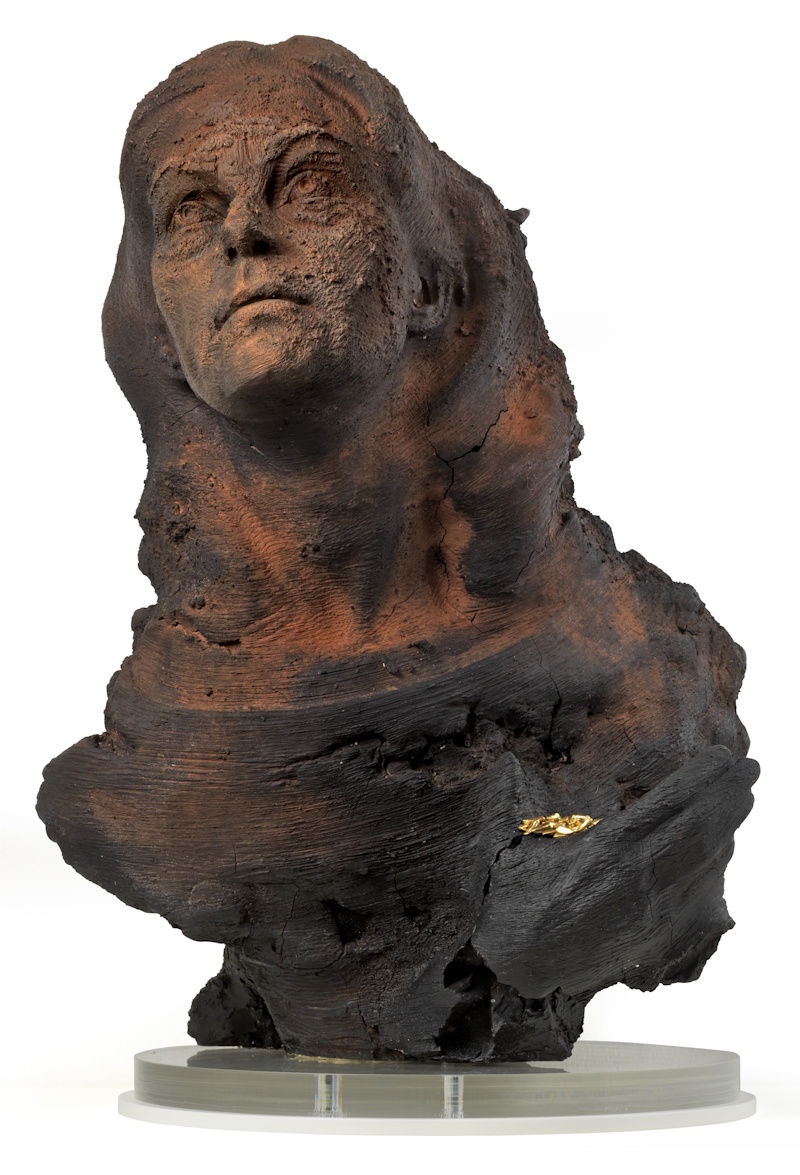 Sculpture bust of Lucie Green by Marcus Cornish, 2015 ©Marcus Cornish
Sculpture bust of Lucie Green by Marcus Cornish, 2015 ©Marcus Cornish
Patterns in nature have been studied through history, but the science of phyllotaxis, the arrangement of leaves or other parts of a plant where they spiral or whorl, began in 1754 through the work of Charles Bonnet FRS and his studies on the use of leaves and plants. The application of mathematics to the biological system of plants continued into the early nineteenth century, when the German botanist Alexander Braun observed that the spiralling arms on pinecones conformed to Fibonacci number theory. This was supported by the work of Auguste Bravais and his brother Louis, working around the same time on the arrangement of leaves.
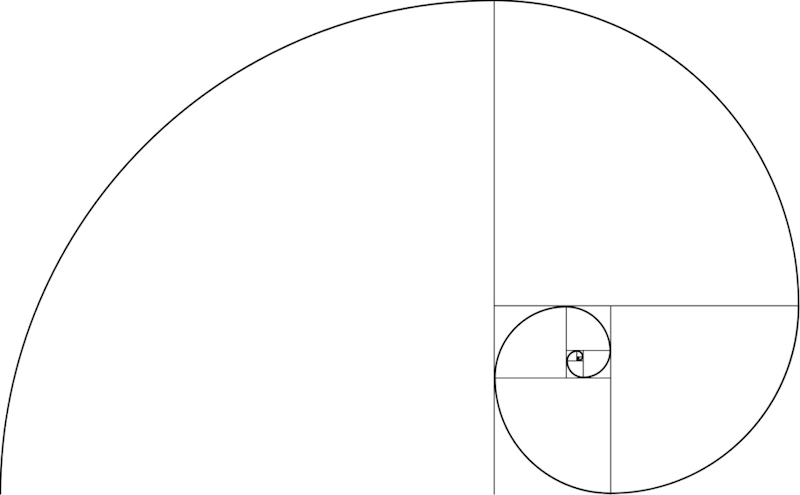
Fibonacci spiral by Jcw888us - Own work, CC BY-SA 4.0
The Fibonacci sequence and its relationship to the golden ratio is believed to render aesthetically pleasing patterns, and the formula has been used by artists in the composition of paintings to manipulate the viewer’s focus. The botanist and illustrator Arthur Harry Church FRS continued investigations into the phenomenon, having grown dissatisfied with the spiral theory, which he believed had been diluted over time into generalisations on plant morphology. He published his ideas in a 1904 book, On the relation of phyllotaxis to mechanical laws, with the help of a Royal Society grant. Church used his skills as an illustrator and amateur photographer to create accurate representations of the phyllotaxis of plants, which he described as ‘architectural studies of vegetable life’, aided by a camera lucida:
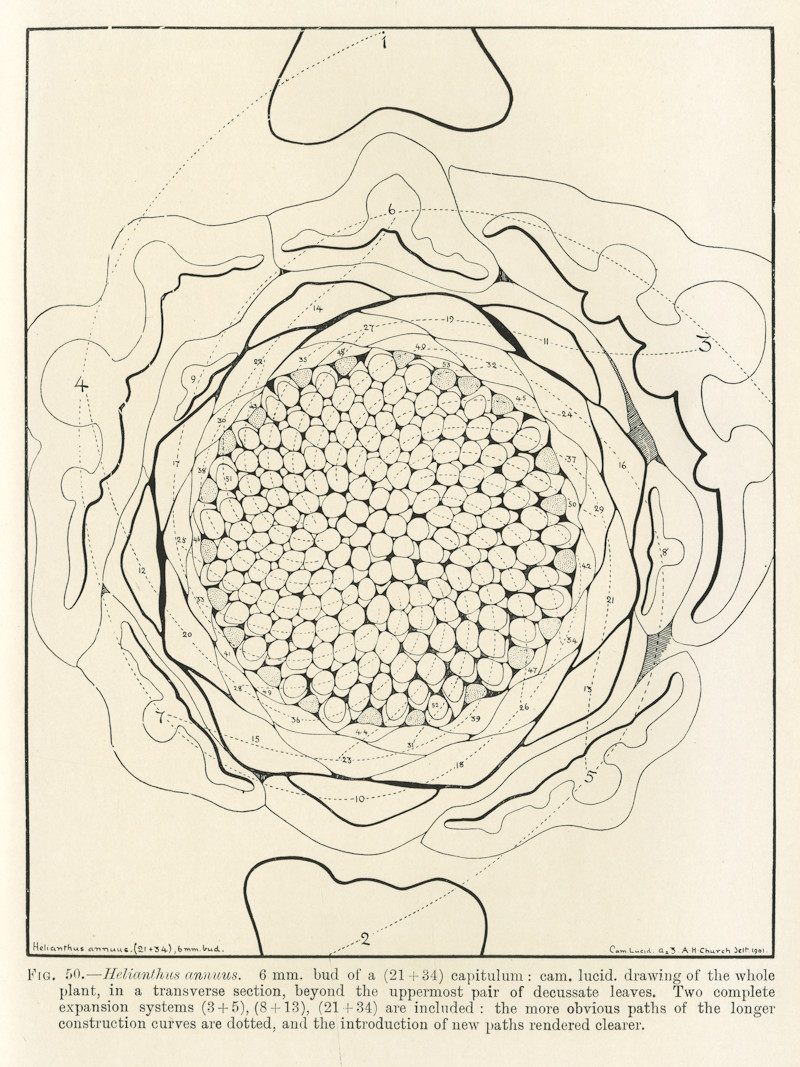 Figure 50: transverse section of Helianthus annuus showing phyllotactic arrangement, created using a camera lucida, by Arthur Harry Church, 1904
Figure 50: transverse section of Helianthus annuus showing phyllotactic arrangement, created using a camera lucida, by Arthur Harry Church, 1904
As mentioned in a previous blogpost, Church was a fine botanical illustrator, and his depictions of plant anatomy are unique in their style and accuracy. He set out to document 100 common flowers with a selection of diagrams and descriptions in a book entitled Types of floral mechanism; however, only the first volume was ever published. The work was organised according to the time of year when the flower was in bloom, so regretfully I can’t include a sunflower since he didn’t make it past April. I’ll therefore conclude this article with an illustration of a snowdrop, as a helpful reminder to plant your early-flowering bulbs as the summer sun begins to sink with the changing of the year.
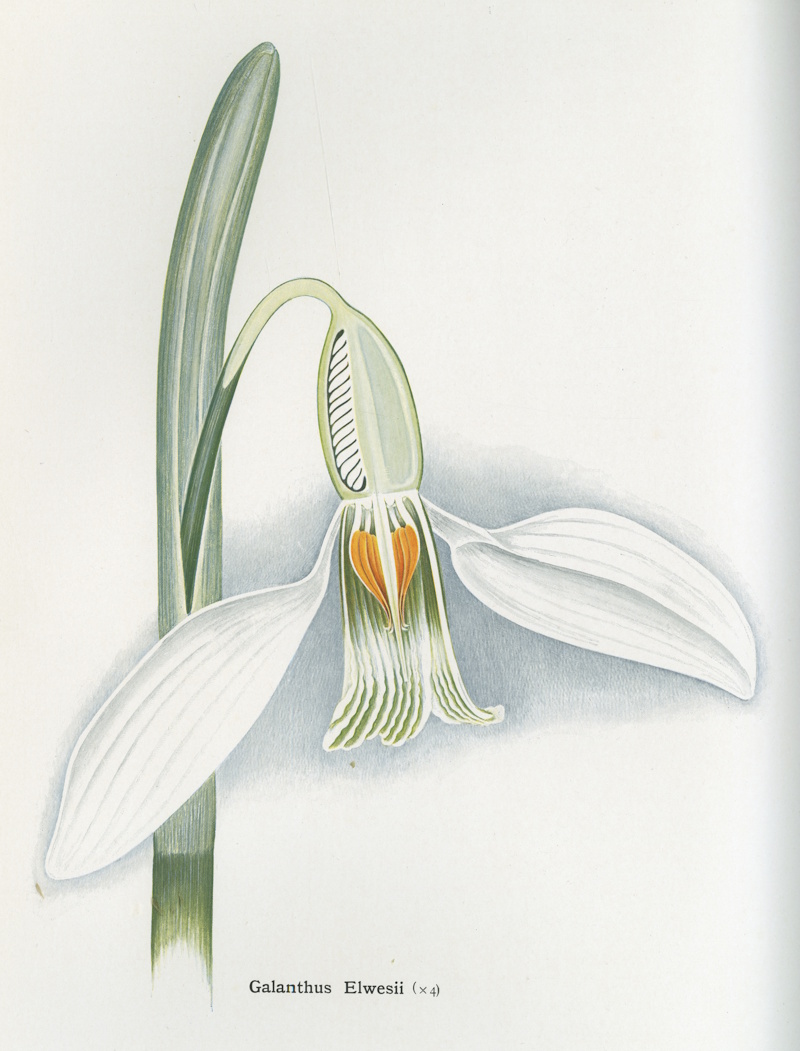 Galanthus elwesii by Arthur Harry Church, from Types of floral mechanism, 1908
Galanthus elwesii by Arthur Harry Church, from Types of floral mechanism, 1908





